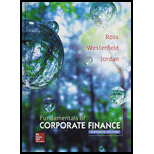
The Decision to Lease or Buy at Warf Computers
Warf Computers has decided to proceed with the manufacture and distribution of the virtual keyboard (VK) the company has developed. To undertake this venture, the company needs to obtain equipment for the production of the microphone for the keyboard. Because of the required sensitivity of the microphone and its small size, the company needs specialized equipment for production.
Nick Warf, the company president, has found a vendor for the equipment. Clapton Acoustical Equipment has offered to sell Warf Computers the necessary equipment at a price of $6.1 million. Because of the rapid development of new technology, the equipment falls in the three-year MACRS
Alternatively, the company can lease the equipment from Hendrix Leasing. The lease contract calls for four annual payments of $1.48 million due at the beginning of the year. Additionally, Warf Computers must make a security deposit of $400,000 that will be returned when the lease expires. Warf Computers can issue bonds with a yield of 11 percent, and the company has a marginal tax rate of 35 percent.
3. In the leasing discussion, James informs Nick that the contract could include a purchase option for the equipment at the end of the lease. Hendrix Leasing offers three purchase options:
a. An option to purchase the equipment at the fair market value.
b. An option to purchase the equipment at a fixed price. The price will be negotiated before the lease is signed.
c. An option to purchase the equipment at a price of $250,000.
How would the inclusion of a purchase option affect the value of the lease?
Want to see the full answer?
Check out a sample textbook solution
Chapter 27 Solutions
Fundamentals of Corporate Finance with Connect Access Card
- No ai Which of the following is a primary market transaction? a) Buying shares on a stock exchangeb) Buying bonds from a bondholderc) Initial Public Offering (IPO)d) Trading in derivativesarrow_forwardWhat is the term for a bond's fixed interest payment? a) Yieldb) Couponc) Principald) Discountarrow_forwardNo Ai What is the term for a bond's fixed interest payment? a) Yieldb) Couponc) Principald) Discountarrow_forward
- I need help!! 12. A beta value of 1.5 indicates: a) Less risk than the marketb) Same risk as the marketc) 50% more risk than the marketd) 50% less risk than the marketarrow_forwardA portfolio with the highest expected return for a given level of risk is called: a) Risk-free portfoliob) Efficient portfolioc) Diversified portfoliod) Arbitrage portfolioarrow_forwarddon't use chatgpt!! The process of determining the present value of future cash flows is known as: a) Amortizationb) Discountingc) Capitalizationd) Compoundingarrow_forward
- The process of determining the present value of future cash flows is known as: a) Amortizationb) Discountingc) Capitalizationd) Compoundingarrow_forwardNo ai The process of determining the present value of future cash flows is known as: a) Amortizationb) Discountingc) Capitalizationd) Compoundingarrow_forwardA portfolio with the highest expected return for a given level of risk is called: a) Risk-free portfoliob) Efficient portfolioc) Diversified portfoliod) Arbitrage portfolio need help!arrow_forward
- i need help!! Dividend payout ratio is calculated as: a) Dividends / Net incomeb) Net income / Dividendsc) Retained earnings / Dividendsd) Dividends / Total equityarrow_forwardDon't use chatgpt!! 12. A beta value of 1.5 indicates: a) Less risk than the marketb) Same risk as the marketc) 50% more risk than the marketd) 50% less risk than the marketarrow_forwardNo ai 12. A beta value of 1.5 indicates: a) Less risk than the marketb) Same risk as the marketc) 50% more risk than the marketd) 50% less risk than the marketarrow_forward
 Survey of Accounting (Accounting I)AccountingISBN:9781305961883Author:Carl WarrenPublisher:Cengage Learning
Survey of Accounting (Accounting I)AccountingISBN:9781305961883Author:Carl WarrenPublisher:Cengage Learning
